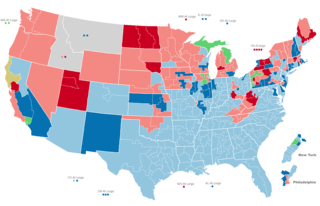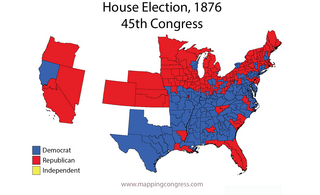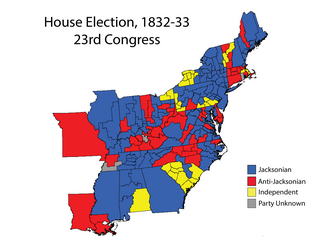Related Research Articles

El Dorado County, officially the County of El Dorado, is a county located in the U.S. state of California. As of the 2020 census, the population was 191,185. The county seat is Placerville. The County is part of the Sacramento-Roseville-Arden-Arcade, CA Metropolitan Statistical Area. It is located entirely in the Sierra Nevada, from the historic Gold Country in the western foothills to the High Sierra in the east. El Dorado County's population has grown as Greater Sacramento has expanded into the region. Where the county line crosses US 50 at Clarksville, the distance to Sacramento is 15 miles. In the county's high altitude eastern end at Lake Tahoe, environmental awareness and environmental protection initiatives have grown along with the population since the 1960 Winter Olympics, hosted at the former Squaw Valley Ski Resort in neighboring Placer County.

Glenn County is a county located in the U.S. state of California. As of the 2020 census, the population was 28,917. The county seat is Willows. It is located in the Sacramento Valley, in the northern part of the California Central Valley. The Grindstone Rancheria, reservation of the Grindstone Indian Rancheria of Wintun-Wailaki Indians, is located in Glenn County.

Inyo County is a county in the eastern central part of the U.S. state of California, located between the Sierra Nevada and the state of Nevada. In the 2020 census, the population was 19,016. The county seat is Independence. Inyo County is on the east side of the Sierra Nevada and southeast of Yosemite National Park in Central California. It contains the Owens River Valley; it is flanked to the west by the Sierra Nevada and to the east by the White Mountains and the Inyo Mountains. With an area of 10,192 square miles, Inyo is the second-largest county by area in California, after San Bernardino County. Almost one-half of that area is within Death Valley National Park. However, with a population density of 1.8 people per square mile, it also has the second-lowest population density in California, after Alpine County.

The 1920 United States House of Representatives elections were elections for the United States House of Representatives to elect members to serve in the 67th United States Congress. They were held for the most part on November 2, 1920, while Maine held theirs on September 13. They coincided with the election of President Warren G. Harding, the first time that women in all states were allowed to vote in federal elections after the passage of the 19th Amendment.

1916 United States House of Representatives elections were elections for the United States House of Representatives to elect members to serve in the 65th United States Congress. They were held for the most part on November 7, 1916, while Maine held theirs on September 11. They coincided with the re-election of President Woodrow Wilson.

1914 United States House of Representatives elections were elections for the United States House of Representatives to elect members to serve in the 64th United States Congress. They were held for the most part on November 3, 1914, while Maine held theirs on September 14. They were held in the middle of President Woodrow Wilson's first term.

The 1912 United States House of Representatives elections were elections for the United States House of Representatives to elect members to serve in the 63rd United States Congress. They were held for the most part on November 5, 1912, while Maine and Vermont held theirs in September. They coincided with the election of President Woodrow Wilson.
The 1910 United States House of Representatives elections were held for the most part on November 8, 1910, while Maine and Vermont held theirs early in September, in the middle of President William Howard Taft's term. Elections were held for all 391 seats of the United States House of Representatives, representing 46 states, to the 62nd United States Congress.
The 1908 United States House of Representatives elections were held for the most part on November 3, 1908, with Oregon, Maine, and Vermont holding theirs early in either June or September. They coincided with the 1908 United States presidential election, which William Howard Taft won. Elections were held for all 391 seats of the United States House of Representatives, representing 46 states, to serve in the 61st United States Congress.
The 1904 United States House of Representatives elections were held for the most part on November 8, 1904, with Oregon, Maine, and Vermont holding theirs early in either June or September. They coincided with the election to a full term of President Theodore Roosevelt. Elections were held for 386 seats of the United States House of Representatives, representing 45 states, to serve in the 59th United States Congress.
The 1902 United States House of Representatives elections were held for the most part on November 8, 1902, with Oregon, Maine, and Vermont holding theirs early in either June or September. They occurred in the middle of President Theodore Roosevelt's first term, about a year after the assassination of President William McKinley in September 1901. Elections were held for 386 seats of the United States House of Representatives, representing 45 states, to serve in the 58th United States Congress.
The 1900 United States House of Representatives elections were held for the most part on November 6, 1900, with Oregon, Maine, and Vermont holding theirs early in either June or September. They coincided with the re-election of President William McKinley. Elections were held for 357 seats of the United States House of Representatives, representing 45 states, to serve in the 57th United States Congress. Special elections were also held throughout the year.

The 1882 United States House of Representatives elections were held for the most part on November 7, 1882, with five states holding theirs early between June and October. They occurred during President Chester A. Arthur's term. Elections were held for 325 seats of the United States House of Representatives, representing 38 states, to serve in the 48th United States Congress. They were the first elections after reapportionment following the 1880 United States Census, increasing the size of the House. Special elections were also held throughout the year.
The 1880 United States House of Representatives elections were held for the most part on November 2, 1880, with five states holding theirs early between June and October. They coincided with the 1880 presidential election which was won by James A. Garfield, who was a member of the House at the time. Elections were held for 293 seats of the United States House of Representatives, representing 38 states, to serve in the 47th United States Congress. This was the first time that every state held their regular House elections on or before Election Day. Special elections were also held throughout the year.

The 1876–77 United States House of Representatives elections were held on various dates in various states between June 5, 1876 and March 13, 1877. Each state set its own date for its elections to the House of Representatives before the first session of the 45th United States Congress convened on October 15, 1877. The size of the House increased to 293 seats with the addition of the new state of Colorado.

The 1868–69 United States House of Representatives elections were held on various dates in various states between June 1, 1868 and August 2, 1869. Each state set its own date for its elections to the House of Representatives before or after the first session of the 41st United States Congress convened on March 4, 1869. They coincided with the 1868 United States presidential election, which was won by Ulysses S. Grant. Elections were held for all 243 seats, representing 37 states. All of the former Confederate states were represented in Congress for the first time since they seceded from the Union.

The 1914 United States Senate elections, with the ratification of the 17th Amendment in 1913, was the first time that all seats up for election were popularly elected instead of chosen by their state legislatures. And thus it became the first time that they were generally scheduled on Election Day to coincide with the U.S. House elections. The 32 seats of Class 3 were contested in regular elections in 1914. Special elections were also held to fill vacancies. These elections occurred in the middle of Democratic President Woodrow Wilson's first term.
The 1842–43 United States House of Representatives elections were held on various dates in various states between August 1, 1842 and November 8, 1843. Each state set its own date for its elections to the House of Representatives before the first session of the 28th United States Congress convened on December 4, 1843. The exception was Maryland, who held theirs so late that they ran into February 1844. These elections occurred during President John Tyler's term. The congressional reapportionment based on the 1840 United States Census unusually decreased the number of House seats, from 242 down to 223.

The 1832–33 United States House of Representatives elections were held on various dates in various states between July 2, 1832 and October 7, 1833. Each state set its own date for its elections to the House of Representatives before the first session of the 23rd United States Congress convened on December 2, 1833. They were held concurrently with the 1832 presidential election, in which Democrat Andrew Jackson was re-elected. The congressional reapportionment based on the 1830 United States Census increased the size of the House to 240 seats.

The 1830–31 United States House of Representatives elections were held on various dates in various states between July 5, 1830 and October 3, 1831. Each state set its own date for its elections to the House of Representatives before the first session of the 22nd United States Congress convened on December 5, 1831. Elections were held for all 213 seats, representing 24 states.
References
- 1 2 3 "Gayadomonas". www.uniprot.org.
- 1 2 Chi, WJ; Park, JS; Kwak, MJ; Kim, JF; Chang, YK; Hong, SK (28 November 2013). "Isolation and characterization of a novel agar-degrading marine bacterium, Gayadomonas joobiniege gen, nov, sp. nov., from the Southern Sea, Korea". Journal of Microbiology and Biotechnology. 23 (11): 1509–18. doi:10.4014/jmb.1308.08007. PMID 23966020.